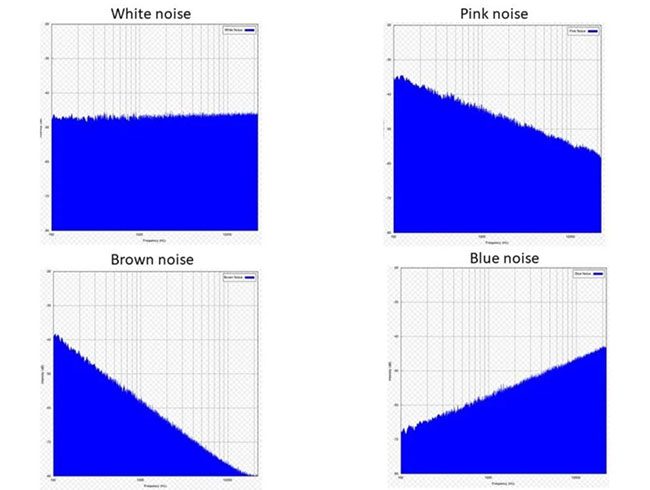White noise is the most well-known type of sound, but there are many other sounds that can help you focus and sleep better.
When you need to concentrate or rest, the disruptive sounds of traffic or construction can be bothersome. However, a favorite tune or the sound of rain and ocean waves can help you fall asleep faster. These too are forms of noise.
Among these sounds, white noise is the most recognized. However, it is not the only noise that can facilitate sleep. In fact, there are many sound colors that provide distinct benefits, affecting listeners in various ways.

Many people use noise to help them focus and sleep better. (Image: Shutterstock).
The Benefits of Noise During Sleep
Different types of noise are distinguished based on frequency (Hz) and intensity (dB), named according to colors. For example, white noise emits sounds across all frequencies that the human ear can hear, similar to how white light contains all the colors visible to the human eye.
According to CNET, numerous studies show that using noise can help you fall asleep more easily. First, these sounds can mask sudden noises (like barking dogs or doors opening) that disrupt sleep.
Many people also struggle to sleep at night due to anxiety and stress. If you play the right sounds, you can focus and fall asleep more easily.
Common Types of Noise
Noise types can be categorized based on frequency and sound intensity for different purposes. Here are some common sound colors and their corresponding benefits.

Frequency (horizontal axis) and intensity (vertical axis) of 4 common types of noise. (Image: Wikipedia).
White Noise
This type of noise encompasses all frequencies that humans can hear (from 20-20,000 Hz) at equal intensity, effectively masking and blocking out annoying external sounds, helping you drift off to sleep faster.
Sounds classified as white noise include the whir of a fan, air conditioner, television, or running air purifier…
In addition to aiding sleep, some studies suggest that white noise can help soothe infants and reduce crying. However, users should consult guidelines on how to use sound properly to avoid negatively impacting a child’s development.
Pink Noise
Similar to white noise, pink noise includes all frequencies that humans can hear. However, the bass intensity of pink noise is higher, featuring deeper sounds like gentle rain or ocean waves.
Pink noise can also drown out distracting sounds like engine noise or footsteps.
According to CNET, the soothing, deeper effect makes many people prefer pink noise over white noise. Some studies even show that pink noise helps prolong deep sleep and improve memory by filtering out high-frequency sounds.

Interface of the Atmosphere noise generator app. (Image: Atmosphere).
Brown Noise
Brown noise (or red noise) is named after botanist Robert Brown, who documented the random and rapid motion of particles in liquids.
Brown noise can be seen as a deeper and richer version of pink noise, with its intensity concentrated in lower frequency ranges. The sounds of brown noise are quite powerful, such as flowing waterfalls or heavy rain.
Some studies suggest that brown noise can alleviate tinnitus symptoms and enhance cognitive abilities. However, according to WebMD, more time is needed to specifically study this sound’s effects on human sleep.
Blue Noise
In contrast to brown noise, blue noise has intensity concentrated in higher frequency ranges with very few bass sounds, making it somewhat more piercing than pink or white noise.
The sound of a water faucet dripping is one example of blue noise. If you are not sensitive to high-pitched sounds, blue noise can be effective in drowning out and blocking external noise.
Because it can be quite shrill at high volumes, some experts often use blue noise as a blend within music to reduce distortion and smooth out the sound.
It is difficult to determine which type of noise is best for sleep since comparisons in similar conditions are challenging. According to CNET, you can download apps like White Noise Lite or Atmosphere to try out different sounds and find what works best for you.



















































